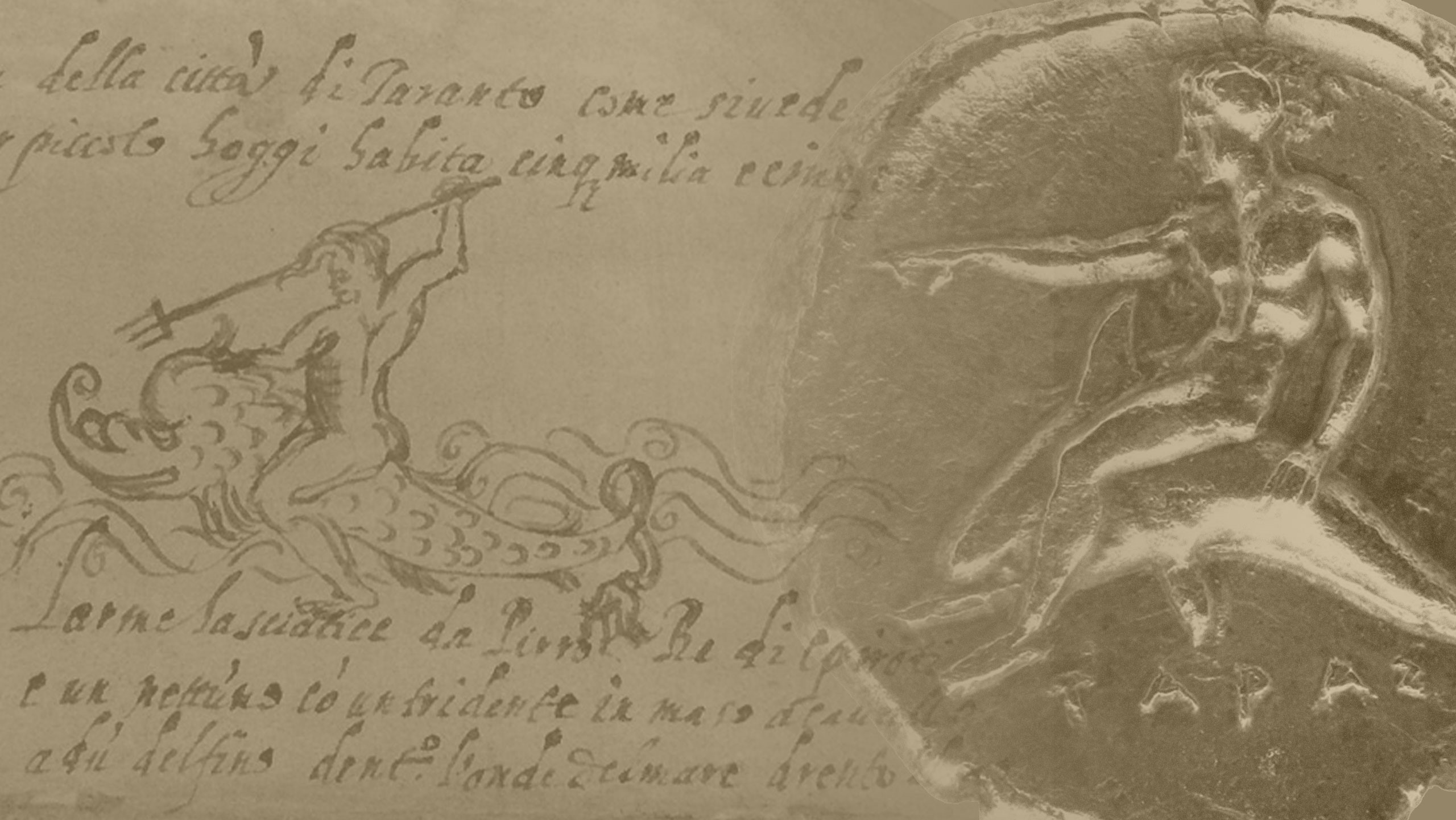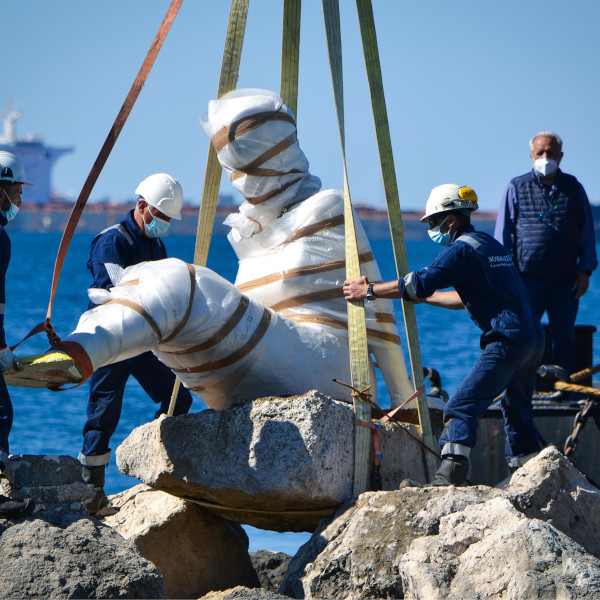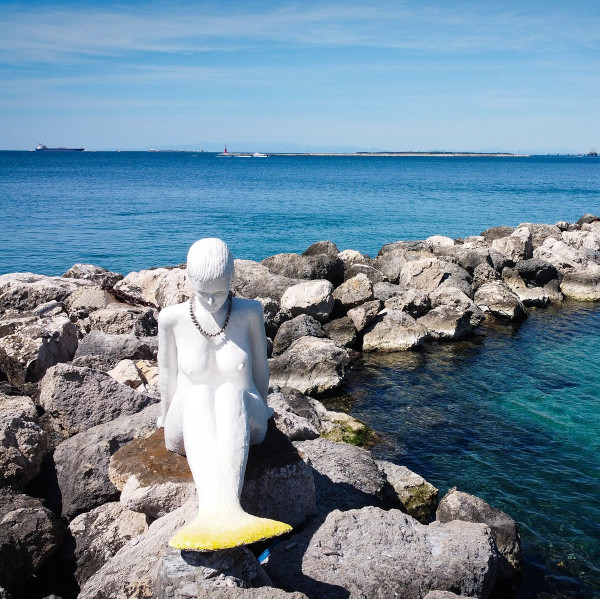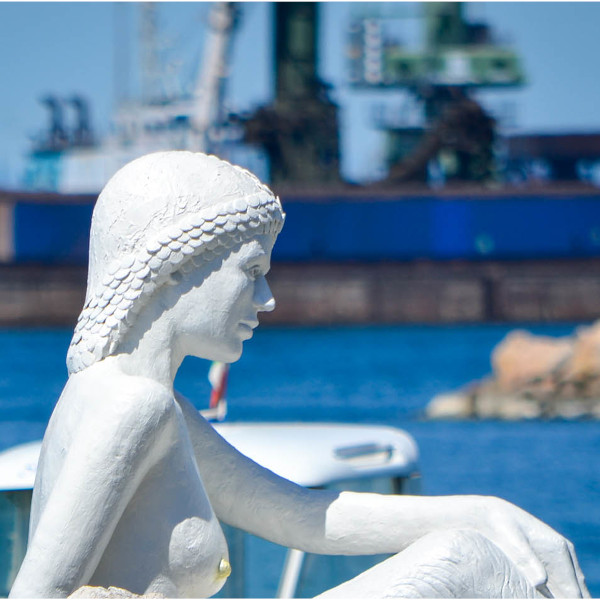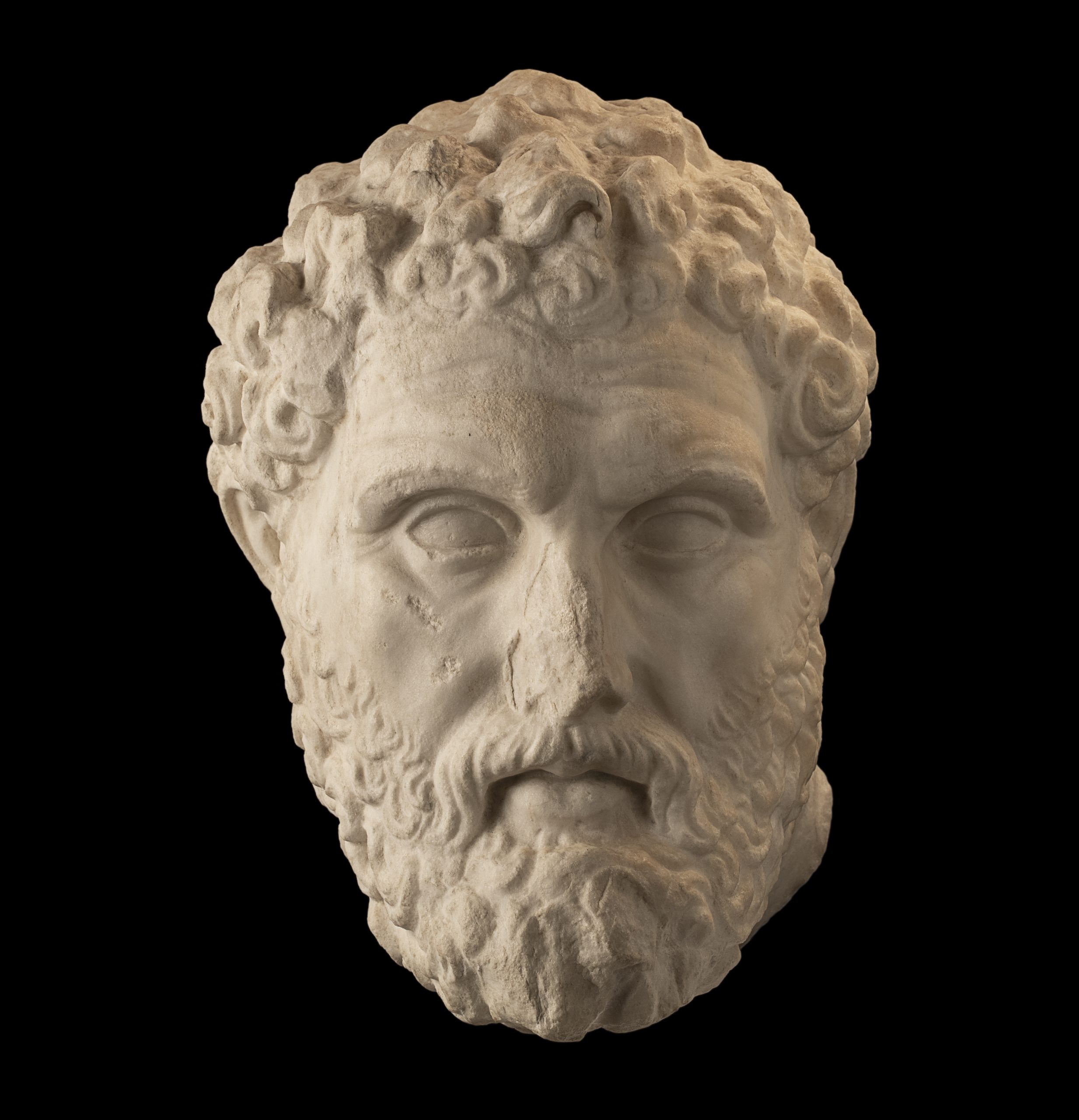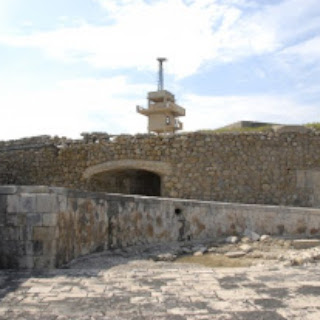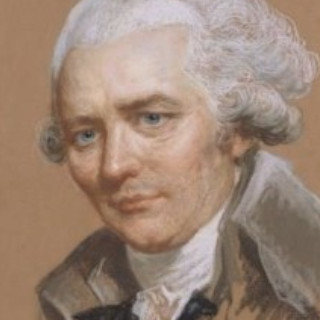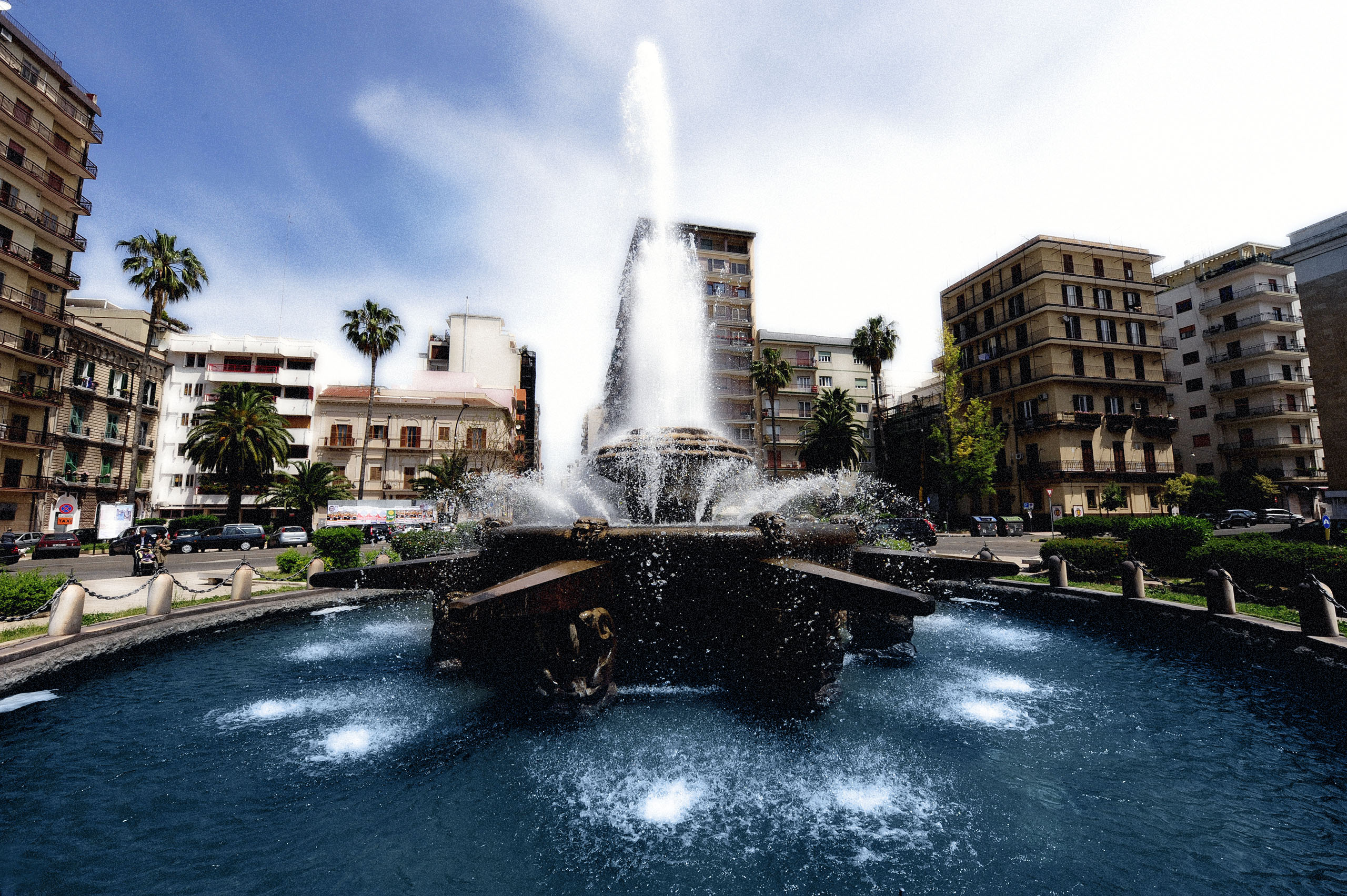a millennial story
The foundation of Taranto is interwoven with legends that have a common element: the sea.
The mythical Taras, son of Poseidon, arrived on the back of a dolphin; the Spartan Phalanthos linked his shipwreck to an oracle. On his return from the Holy Land, Saint Catald heard a divine voice pointing out his new bishopric, and he sealed his bond with Taranto by throwing his ring into the Mar Piccolo. Throughout the thousands of years of the city’s history, the port area has had sacred spaces. An ancient chapel dedicated to St Mark and St Peter commemorated the passage of the two saints on their way to Rome. Of all of them, the relationship with St Cataldo, the city’s patron saint, should be mentioned. As early as 1937, he was celebrated on the quay named after him with a 5-metre high statue, and a reassuring inscription for mariners:
“The eye fixed on God, the mind against the wrath of the clouds. For the health of seafarers. The heart for my city. Splendid in faith and glory”.
THE MYTH OF TARAS AND THE FOUNDING OF THE CITY
A colony of dolphins still inhabits the Gulf of Taranto today, where they can easily be seen swimming on the surface of the water.
Legend has it that the ancient Magna Graecia colony of Taranto was founded by Taras, son of Poseidon, god of the sea, some 2000 years before Christ. Taras is said to have landed near a waterway, which he then named Tara. While performing sacrifices to honour his father Poseidon, the appearance of a dolphin was seen as a good omen and an encouragement to found a city.
THE LEGEND OF PHALANTHOS AND AETHRA
Another legend has as its founder the Spartan Phalanthos, who landed with his wife Aethra and companions in Taranto around 706 BC, and, with him, refernces to the actual history of Taranto begin. The first laws, following Spartan usage, were introduced in ancient Taranto thanks to him, establishing an aristocratic form of government in the Spartan manner.
THE SIRENS OF TARANTO
Ethra, Satyria and Skuma enchant citizens and tourists visiting Taranto along the Gulf of the Mar Grande from the “ringhiera” (balcony) of Corso Vittorio Emanuele, thus enriching the existing cultural and tourist heritage of the ‘Taranto destination’ – today also a cruise destination in the Med – through new elements of widespread beauty to be admired in the suggestive routes and itineraries included in the tourist offer of the Ionian city. Upon completion of the recovery, restoration and rehabilitation work carried out in the marina “Molo Sant’Eligio“, the relocation operations of the Taranto Sirens were completed in 2021, an artistic work created in 2001 by the sculptor from Taranto, Mr Francesco Trani.
The Sirens – severely tested by the weather and the sea erosion during their 20 years of life – have returned to rediscover beauty on the cliffs of the Harbor Master’s Office in the Mar Grande – an area falling within the territorial district of the Port Network Authority of the Ionian Sea (PNAIS) since 2004 – together with two new “flower rocks”, embellished with 160 flowers of the rebirth in polyurethane resin, a gift by Master Trani donated to the city of Taranto. The sculptures – executed in marine cement mortar with a metal core, weighing about 2500 kilograms each – in addition to being the object of value, narration and legend for the city of the two seas, represent one of the numerous cultural and artistic attractions for citizens and tourists visiting the Old Town in Taranto.
A MYTH THAT UNITES THE MEDITERRANEAN
In ancient Taras, the cults of gods and heroes from Greek mythology were very much alive. Particular veneration was accorded to the protector of trade: Heracles. The demigod protector of commerce, famous for his superhuman strength, was considered to be the ancestor of Phalanthos. And Phalanthos, in the myth, promotes trade with the Greek motherland.
Eracle and Taranto.
There are frequent sculptural representations of Hercules in the territory of Taranto.
We also find him in the Romanised city, recognisable by characteristic iconographic motifs: the musculature, the club and the head covered by the lion skin acquired by killing the lion that was terrorising the area of Mycenae. These representations were probably inspired by the bronze Hercules erected on the Acropolis by Lysippus, a Greek sculptor and bronze artist of the 4th century BC, of which only literary evidence remains.
Lysippus himself was the creator of the colossal statue of Zeus, placed in the agora of Tarentum, and which became the spoils of war of Fabius Maximus when he conquered the city in 209 BC, and took the statue of Zeus to Rome to be installed on the Capitoline Hill.
THE GHOST OF LACLOS AND THE ISLAND OF ST PAUL
Choderlos de Laclos was a general in Napoleon’s army and the author of the novel “The Dangerous Liaisons” published in 1782, a masterpiece of French literature.
His affairs are deeply linked with Taranto, because it was here that he found himself in command of the Italian Army’s Artillery Reserve, and also here that he was assigned the task of continuing the construction of a fort for the defence of Taranto – and he died here on the 5th of September, 1803. He was buried in the parade ground inside the fort built on the island of San Paolo, the smallest of the Cheradi archipelago.
Sadly, his remains did not find “the repose of the tomb in the bitter solitude of the little island”, as Monsignor Blandamura wrote, describing the desecration of his grave by undisciplined soldiers. The story of Laclos’ ghost is linked to this outrage. Many fishermen swear that on stormy nights a spectral figure can be seen wandering restlessly around the island.
ARCHITA, THE LEADING GENIUS
Giovanni Guarino, actor and storyteller from Taranto, in love with his city and a lover of local history, tells us about Archita.
The Rose of the Winds
The 'Rosa of the Winds' fountain designed by the architect Brunetti in honour of the city's seafaring tradition.
In April 1953 the fountain in Piazza Ebalia was inaugurated [Ebalia was the area from which Taranto expanded and its name derives from Ebalo, a legendary king of Sparta].
On the edge of the pool is a Latin inscription et adversis ventis impavide navigabimus (we will sail courageously even in adverse winds).

